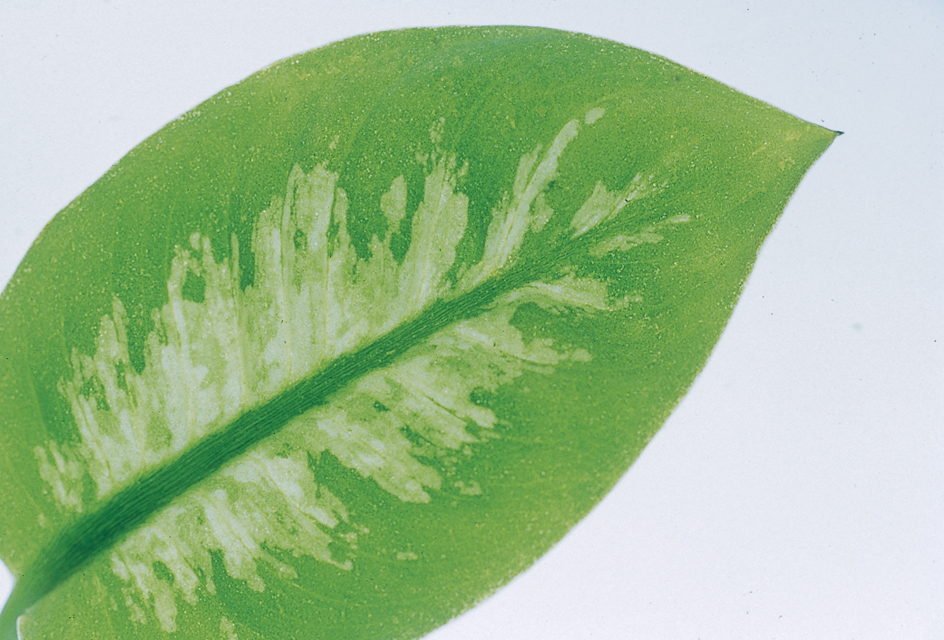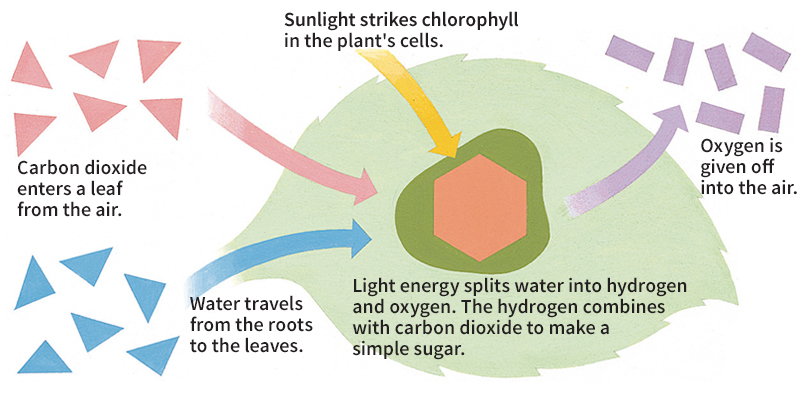Photosynthesis << `foh` tuh SIHN thuh sihs or `foh` toh SIHN thuh sihs >> is a food-making process that occurs in green plants, algae, and certain microscopic organisms. Photosynthesis is the chief function of leaves. The word photosynthesis means putting together with light.
Green plants use sunlight to combine carbon dioxide and water to make food. This process converts light energy into the chemical energy of food. Plants use the food to grow, or they store it for later consumption. Human beings and all other animals get food by eating plants or by eating animals that eat plants.
Plants absorb the light for photosynthesis with a green pigment called chlorophyll. Each food-making cell in a plant leaf contains chlorophyll in small bodies called chloroplasts. In chloroplasts, light energy causes water to split apart, separating its hydrogen and oxygen atoms. In a series of complicated steps, the hydrogen combines with carbon dioxide to form a simple sugar. Oxygen from the water is given off in the process. From sugar—together with nitrogen, sulfur, and phosphorus from the soil—green plants can make starch, fat, protein, vitamins, and other complex compounds essential for life. Photosynthesis provides the chemical energy needed to produce these compounds.


Other organisms, including algae and certain bacteria and archaea, can also capture light energy and use it to make food. Algae, much like green plants, absorb light with chlorophyll contained in chloroplasts. Photosynthetic bacteria contain chlorophyll in tiny bodies called chromatophores. In chromatophores, compounds other than water are combined with carbon dioxide to form sugar. No oxygen is released. Certain archaea have developed a photosynthetic process that does not require chlorophyll.
When plants and animals need to use stored food for growth and activity, their bodies combine the food with oxygen to release chemical energy. This process, which is called respiration, is the reverse of photosynthesis. The plant or animal uses up oxygen and gives off carbon dioxide and water. Plants then use this carbon dioxide and water to produce more food and oxygen. The cycle of photosynthesis and respiration maintains Earth’s natural balance of carbon dioxide and oxygen.
See also Carbon cycle; Leaf (How a leaf makes food); Chlorophyll; Respiration.
